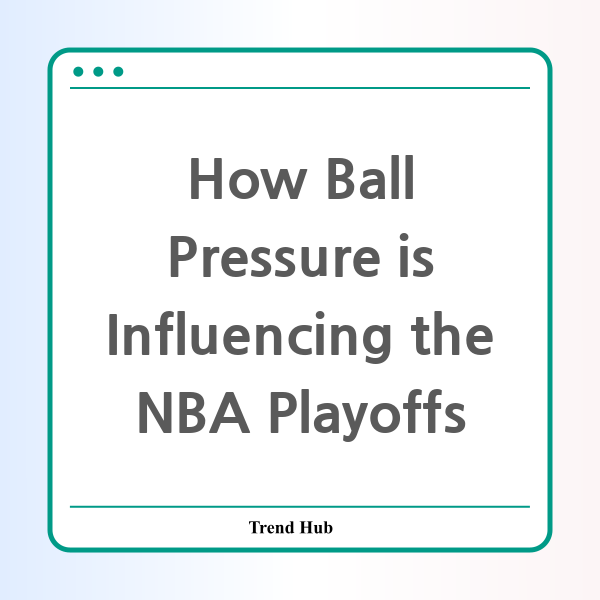* This website participates in the Amazon Affiliate Program and earns from qualifying purchases.

As the NBA playoffs heat up, one question lingers on the minds of fans and analysts: what hidden strategies are shaping the outcomes of these high-stakes games? One intriguing factor that has emerged in the 2025 Eastern Conference finals is the role of ball pressure. This strategic approach to defense is changing the dynamics of the game, revealing an unseen playbook that can swing a series in a matter of seconds.
In the recent Game 3 showdown between the New York Knicks and the Indiana Pacers, we witnessed a pivotal moment that showcased the importance of ball pressure. With the game hanging in the balance and just under six minutes left on the clock, the Knicks decided to shake up their defensive strategy. Typically, they sat back deep in their own territory, applying minimal pressure after free throws. However, in a desperate bid to secure a win, the Knicks unleashed a defensive tactic rarely seen this postseason.
The Shift to Aggressive Defense
For the first time in the series, the Knicks sent not one, but three defenders back to apply pressure in the backcourt after a made free throw. This marked a dramatic shift from their usual approach, where they ranked near the bottom of the league for average pickup distance. The results were telling; as the Pacers struggled to initiate their offense, the Knicks capitalized on the opportunity, eventually pulling ahead to win 106-100.
Ball pressure is a tactical maneuver that does not always show up in box scores. However, it influences every possession by disrupting offensive strategies, forcing turnovers, and altering shot selections. According to stats from this year's playoffs, the NBA as a whole operates at a 111 offensive rating without backcourt pressure, but falters to a 109 when facing such pressures. While this might not seem significant at first glance, every single point is crucial in tight playoff matchups.
Defensive Identities: The Pacers vs. The Knicks
Interestingly, the reason behind the Knicks' newfound assertiveness can be traced back to the Pacers' aggressive style of play. Known for their chaos-inducing defense, Indiana has consistently pressured ball handlers, often initiating defense as far as 53 feet from the basket. This has allowed them to implement their fast-paced strategy effectively, making every possession a challenge for their opponents.
The Knicks, on the other hand, traditionally maintained a conservative approach during regular season games, often waiting until the ball crossed half-court before applying defense. However, facing elimination in the playoffs forced them to adjust. By increasing their average pickup distance to 45 feet in the fourth quarter of Game 3, they forced the Pacers to waste critical seconds as they struggled to get into their offensive rhythm.
Adapting to Opponent Strengths
One of the fascinating aspects of ball pressure is that it must be tailored based on the opposing team’s strengths and weaknesses. Certain players can handle pressure better than others, and this flexibility is crucial as the series progresses. The Pacers have learned to apply pressure selectively, which has worked to their advantage—especially against teams that struggle under duress.
The question remains: as the playoffs unfold, how will both teams adapt their strategies? Will the Knicks continue this higher level of ball pressure to force mistakes, or will the Pacers maintain their aggressive style to counteract the Knicks' adjustments? As every game passes, the impact of ball pressure will be an ongoing narrative worth monitoring.
Conclusion: The Hidden Game of Pressure
The increasing significance of ball pressure in the NBA playoffs illustrates how subtle changes in strategy can dramatically alter outcomes. As teams continue to evaluate their approaches and adapt to their opponents, the hidden stories of pressure tactics will reveal themselves, ultimately determining who emerges victorious in this year's championship chase. For basketball enthusiasts, the 2025 playoffs are not just about the scores, but about the nuances that make this sport so compelling.
* This website participates in the Amazon Affiliate Program and earns from qualifying purchases.